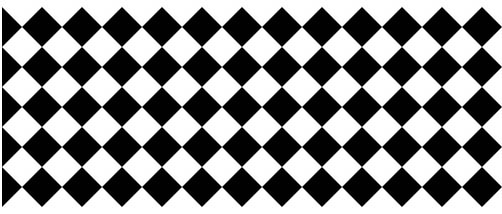Dots can have different shapes. The dot shape refers to the geometry of a single dot, which is the edge shape of the dot. In the traditional dot technology, the dot shape is determined by the corresponding screen structure. In addition to having their own performance characteristics, different shapes of dots have different variations in the process of image duplication, resulting in different duplication results and affecting the quality requirements of the duplication results.
Different shapes of dots have different image tone transfer characteristics. In the actual plate making and printing process, the outlets have a tendency of mechanical expansion. Experiments show that this trend increases with the increase of perimeter (or the sum of perimeters) of the outlets. The sensitivity of the dot area rate to changes in circumference is proportional to its perimeter.
Perimeter (perimeter) and large sites are more likely to expand, and the distortion that may occur in photocopying is also greater.
The dot shapes are different, and the number of overlapped dot areas of neighboring dot sites is different, and overlap (the time when the dot overlaps is the perimeter and maximum time, so the nature of different dot sites is often used to describe the nature of the dot overlap). Differently, the status of image tone transfer is different.
The lap of the network will cause: the density jumps up.
In the selection of the shape of the network used to screen the network, often the point of increasing the size of the element is the primary consideration, different shape of the network changes in the trend, resulting in different products on the choice of outlets.
The dot shapes used in the traditional screening methods include squares, circles, diamonds (diamonds), ellipses, two-points, etc. In modern digital screening technologies, more dots are available. The following is a description of commonly used dot shapes and their characteristics.
1. Square outlets. When square-shaped dots are used to copy images, the ink and white are just in a checkerboard pattern at 50% dots. It is easy to determine the relative percentage of square dots based on dot pitch. It is more sensitive to the original layer. Figure 1 shows the 50% square dots arranged at a 90 degree angle.

Figure 1 50% Square Dots The final formation of dot shapes is closely related to the process of plate making and printing. The square dot can truly show its shape at the percentage of 50% dots. When it exceeds 50% or less than 50%, the dots will be deformed at the corners due to optical and chemical influences during the dot formation. The square has a circle or even a circle. During printing, the dot area is expanded due to the effect of pressure on the ink and the viscosity of the ink. The square dot area ratio is the highest compared to other shapes of dots. The reason for this phenomenon is that, after the area ratio of the square dot reaches 50%, the dot is connected to the four corners of the dot, and when the dot is printed, ink jamming and sticking are likely to occur, resulting in dot gain.
The above mentioned are all the shortcomings of the square dot network, as if the square dot was not necessary. Actually, in some cases, for example, if the requirement of intermediate tone is not particularly strict, the use of square dots can show a more distinct level.
2. Circular outlets. In the same area of ​​the network, the perimeter of the circular outlet is the shortest. When a circular dot is used, the highlights and midtone dots in the picture are not connected to each other. Only the dots in the dark tone can touch each other. Therefore, the value of the dots below the middle tone of the picture is very small, and the middle layer can be preserved.
Compared to other shapes of dots, the circular dot has a smaller expansion coefficient. Under normal conditions, circular dots are connected around the area at a 70% area ratio. Once a circular dot is connected to a circular dot, its expansion coefficient will be very high, resulting in the printing of dark spots in the network because the dot is too large and easy to accumulate in the surrounding, and ultimately make the dark tone of the image lost some of the level.

From the above description, we will find that circular dots have poor ability to play a dark tone and are limited in use. In general, printing companies often avoid using circular dots, especially when printing on offset paper. However, if there are more highlights in the original image to be copied and there are fewer dark notes, it is quite advantageous to use circular dots to represent the high and middle tone region levels.
Below we present the deformation characteristics of square and circular dots:

Purely square nets take a corner at 50%, and pure round nets take a corner at about 78%. It can be seen that when the outlets do not take a corner, the outlets of the square outlets tend to be higher than the round outlets.
Wooden Bowl,Wood Bowl,Acacia Wooden Bowl,Food Garde Wooden Bowl
RealSheen Lifestyle Enterprise Limited , http://www.realsheen.com